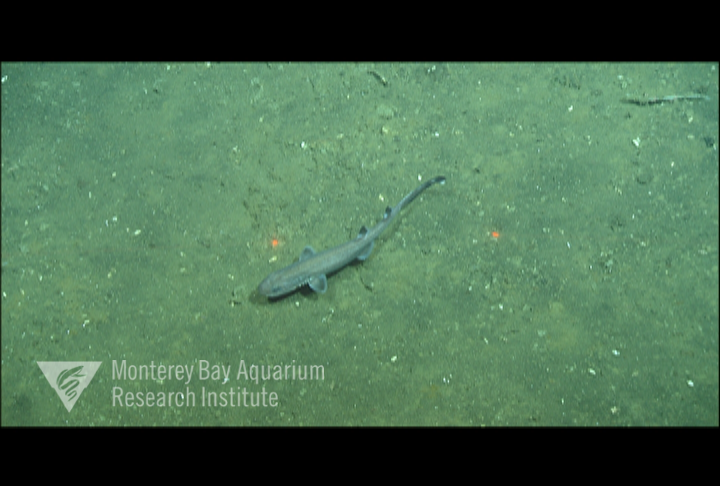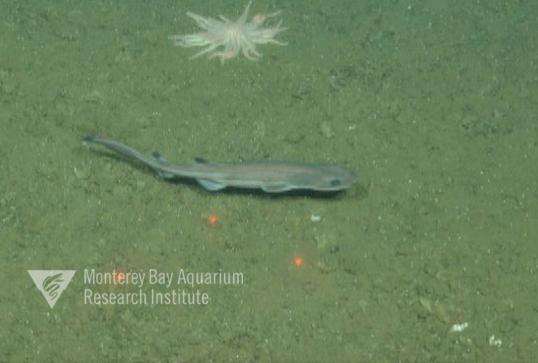Description
General:
These are the most abundant catshark in a lot of areas in the bay. Eye is relatively large, elongate, oval. They have a short, rounded/blunt snout, nasal flaps broad and triangular. Slender and cylindrical; they don’t have the hump in the middle of the body like Apristurus species. Short gill slits. Gray-brown coloration dorsally, and white ventral side. Although not readily visible on most of the animals we observe, the fins can be dark, but with white edges. In the Gulf of California, these sharks co-occur with Cephalurus cephalurus and may be difficult to tell apart when distant, when small, and when they uncharacteristically have the gills expanded in a low O2 environment.
Size:
to 61 cm.
Reproduction:
Eggcases: 70-110 mm in length. Golden-yellow when <1 mo old, after 1 mo egg cases oxidize and become black. Long tendrils on both anterior and posterior ends, thick flanges on both anterior and posterior keel, flanges along the lateral edges resembles a “T” in cross-section. Degrading egg cases will sometimes be covered in a white bacterial mat.
Geographic Information
Published depth range:
91 - 1251 m
Habitat description:
Demersal.
Ocean range (global):
Oregon to Gulf of California.
Additional Information
Verified MBARI depth distribution:
to 1591 m (March 2016).
Consulting taxonomist:
David Ebert, Moss Landing Marine Laboratories.
Consulting taxonomist:
Amber Reichert, Masters candidate, Moss Landing Marine Laboratories.
References
Encyclopedia of LifeTree of Life
World Register of Marine Species
National Center for Biotechnology Information
Ebert, D. (2003). Sharks, rays, and chimeras of California. University of California Press, Berkeley, CA. 284 pp.
Citation:
Parmaturus xaniurus
((Gilbert, 1892)) Deep-Sea Guide (DSG) at http://dsg/mbari.org/dsg/view/concept/Parmaturus%20xaniurus. Monterey Bay Aquarium Research Institute (MBARI). Consulted on 2025-12-30.

 Click here for a larger image.
Click here for a larger image.

